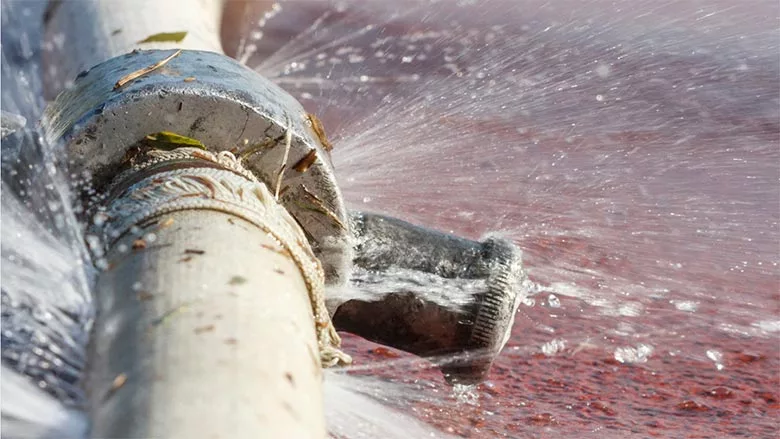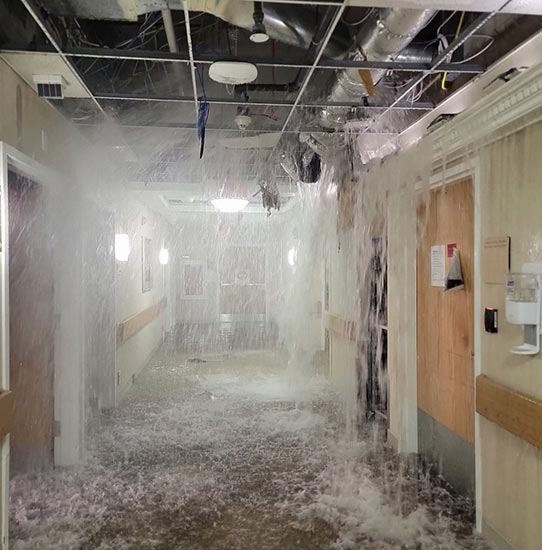Understanding Water Dynamics in Frozen Pipe Damage
Explore the science behind water expansion and how to mitigate frozen pipe damage

Photo credit: Akaratwimages /Canva Professional
Understanding the dynamics of water and its behavior during freezing and thawing is crucial for water damage restoration. Water has an intriguing property making it different from other elements, it expands when it freezes. This distinction results in significant consequences for the integrity of a building’s plumbing as well as the restoration process. This article explores on an elementary level, the science of water expansion, the impact of pressure changes within pipes, and how water moves once a pipe has burst. It will also offer tips for effective water restoration afterwards.
The Science Behind Water Expansion
One of the fundamental aspects of water is that it expands as it freezes, unlike most other substances that contract. This anomaly occurs because of the crystalline structure formed during freezing, which takes up more space. When water freezes inside a pipe, the expansion creates enormous pressure, pressure that can reach up to 40,000 psi, which is more than enough to rupture even the most durable plumbing materials.
The Pressure Dynamics of Frozen Pipes.

Photo: Lou Cordasco
Frozen water doesn't just cause a problem at the ice blockage, the concern results from the way pressure builds within the pipe. As water freezes, the ice blocks further flow, while the liquid water trapped between the ice and the faucet continues to expand. This triggers the pressure to increase rapidly as more ice forms and weak spots along the pipe’s material may rupture.
Interestingly, pipes don’t always burst at the location of the ice. Instead, the high-pressure liquid water is forced to escape, typically in a downstream section from the ice blockage.
Understanding Water Movement Post-Burst
Once a pipe bursts, the damage isn’t observable instantly but unfolds over time as water begins to flow freely. The dynamics of water movement during and after a burst play a critical role in the extent of water damage. Several factors contribute to how quickly and severely water spreads:
- Pressure Release: When a pipe bursts, the sudden release of water pressure can result in a rapid outflow of water or a slow trickle. The volume of water released in the first few moments can be substantial or minimal causing hidden problems.
- Capillary Action: Once water is released from the pipe, it can travel in unexpected ways due to capillary action. This is where water spreads through porous materials such as drywall, wood, and insulation. Cracks and crevices can also allow water to penetrate deep into building structures, causing concealed damage. Remember, water takes the shape of the container and in restoration the container is the home or building so damage may NOT be limited to the immediate area.
- Saturation and Wicking: Water moves towards dry areas, a process known as wicking. Materials like carpet, wood, and drywall absorb water quickly, which is why restoration professionals focus on removing wet materials as early as possible. The longer water is allowed to sit, the deeper it penetrates and the more difficult it becomes to restore without replacement of building materials.
Restoration Challenges: Water in All Its Phases
Water in its forms, liquid, solid (ice), and vapor each pose distinct challenges during restoration. Professionals need to understand how to manage water in these states to minimize long-term damage.
- Ice Removal and Controlled Thawing: After a rupture the frozen sections of the plumbing need to be carefully thawed to prevent further pressure build-up. Controlled thawing using safe methods like low heat or warm towels can prevent the thawed water from causing additional damage by flowing too quickly.
- Water Extraction: The bulk of the restoration process revolves around removing water from the affected areas. Using pumps and high-volume extractors, either portable or truck mounted, helps reduce the moisture and limits further damage.
- Vapor and Humidity Control: Low Relative Humidity (RH) during drying is required and if not reached promptly microbial growth may result. Effective dehumidification and air movement is essential for removing excess moisture as it speeds up the drying process. There is growing debate within the industry about appropriate standards. Evidence shows lower RHs are more important than low humidity ratios (grains per pound) in drying efficiency, lowering dry time and expense but this flows against norms and may be debated as aggressive.
Restoring After Water Damage:
The real difficulty in water restoration lies in managing moisture levels over time. Water damage doesn't end once visible water is removed; persistent moisture remains and can affect structural integrity and indoor air quality. In the wake of any water damage a professional approach is necessary:
- Moisture Mapping: Using specialized tools like moisture meters and infrared cameras, professionals can map out moisture levels in all areas. This determination reveals water not visible to the naked eye and possible migration.
- Drying Strategies: Depending on the extent, category, and building materials the application of different drying methods must be considered. Specialized techniques in dehumidification (refrigerant or desiccant) and air circulation (intra-wall or floor mat) are considered. The experience and keen eye of the restorer are also important tools for the removal of moisture.
- Restoration or Replacement: Not all materials can be saved after water damage. Porous materials such as insulation, drywall, and carpet often need to be replaced due to their ability to harbor moisture long after drying appears complete. Non-porous materials, like certain types of flooring and framing, can sometimes be dried and treated for further use.
Conclusion
Frozen pipes present a unique challenge to restoration professionals. Understanding the dynamics of water from expansion, pressure creation, and migration through building materials is crucial for minimizing damage and effective restoration. While prevention is important, knowledge of how to handle the outcome is equally important. Water restoration is about managing water in all its phases and understanding the effects on a building’s structure over time.
Looking for a reprint of this article?
From high-res PDFs to custom plaques, order your copy today!








